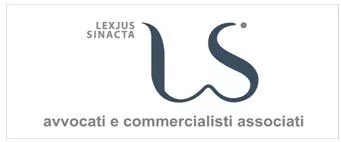Introduction
Unmanned aerial vehicles (UAVs), commonly known as drones and also referred to as remotely piloted aircrafts (RPAs), are increasingly taking up global airspace, a trend that is expected to increase exponentially in the following years. Therefore, opening the European market for UAVs, i.e. authorizing and regulating the civilian use of drones, is an important step towards the aviation market of the future. However, the European regulatory framework on the matter, while other global such as the US are taking the lead, building on expertise in the field of large military RPAS. Since the International Civil Aviation Organisation's (ICAO) standards require that States authorize UAVs in order for them to be able to fly, certification is a necessary preliminary step that should be looked at in order to allow the European aviation industry to be competitive at global level.
The Communication from the European Commission
The European Union is seeking to establish more comprehensive rules for the integration of drones into its airspace. On April 8th 2014, the Commission issued a Communication to the Parliament and the Council, under the title "A new era for aviation. Opening the aviation market to the civil use of remotely piloted aircraft systems in a safe and sustainable manner". This document set out the Commission's guidelines on how drone operations should be addressed within the framework of European policy. The main goals of legislative action on the matter were said to be to enable the progressive development of the commercial drones market while safeguarding the public interest.
In fact, the Communication responded to the call of the European manufacturing and service industry to remove barriers to the introduction of RPAs in the European single market. This technology is ready to make the shift from being purely military equipment to becoming a reliable new technology for civil use, the Commission rightly claims. In order to their full potential, drones should be able to fly like 'normal' air traffic and be integrated among 'normally piloted' aircraft in non-segregated airspace, i.e. airspace open to all civil air transport.
Certification would not only provide the rules to manufacture the aircraft, but also, even more importantly, gradually allow operations, so that industry can gain valuable practical expertise and progressively develop. The creation of such rules to allow civil UAV operations has to be combined with guarantee of the required high levels of safety, security and privacy, which are a precondition for public acceptance of drones.
The Commission points out that current expansion of the RPAS market is inhibited by the absence of an adequate regulatory framework in most Member States regarding certification and the need to obtain individual authorization from each Member State where manufacturers would like to sell or where providers would like to operate. National authorizations do not benefit from mutual recognition and do not allow for European wide activities, either to produce or to operate RPAS. A number of Member States have started developing national rules to facilitate certification, but in the absence of a system of mutual recognition and, most importantly, European standards, to be developed by the European Air Safety Authority (EASA), a true European Market will not emerge, hampering drastically the development of this sector.
Consequently, the Communication states that the EU must put an enabling regulatory structure to which the major players at European and national levels can contribute. Regulatory measures need to be introduced step by step, starting from certification as a regulatory precondition, so that more complex RPAS operations are progressively permitted. The Commission urges Member States to develop a common, comprehensive plan to ensure UAVs become a common part of air traffic by 2016.
The Italian Case
As mentioned above, following an initial phase of exclusive military use, permission for public and commercial uses of UAVs ha already been given by local regulators under certain restrictions in order to respond to market demand. In this regard, it can be useful to analyse the Italian case. Italy has been one of the first authorities to provide for a regulation on drones, including commercial use thereof.
In 2004, a statute first authorised the use of RPAS by the national military for operational and training purposes, within limited airspace and under further limitations to be specified for each operation. However, crisis and war-related operations were exempted from those restrictions. The statute itself acknowledged its provisional nature and the need for a general regulation o the use of unmanned aircrafts in Italian airspace.1
In 2006, two other relevant dispositions were promulgated: an amending statute to the Navigation Code, which introduced UAV into the definition of aircraft,2 and a decree issued by the Ministry of Defence later that year, which specified the characteristics of UAVs and entrusted DGAA (Directorate General for Aeronautical Armament) with the task of certifying said aircrafts.3 At this point, the legislative framework that enabled the Italian military to operate drones was completed for the first time.
Thus, RPAS were first certified in Italy for military purposes, after a complex process, to the lack of precedent in the sector. The first RPAS certified by the Italian military were "Predator" aircrafts, acquired from the Californian manufacturer General Atomics. This fleet has been used by the Italian armed forces in different operations and has been upgraded with other RPAS over the last few years.
On the other hand, in the last few years the Italian Ministry of Defence has granted temporal authorization, under strict limitations, to the operation of Predator aircrafts by the American forces from the Italian airbase "Sigonella", in Sicily. The basis for this authorization can be found in the bilateral agreements in force between the parties and the relevant communications from the Italian authorities. The authorization is further subject to a series of conditions: notification to the Italian authorities, coordination with Italian operations, respect of local operational procedure, etc. Recently, Sigonella has also become the operational base for several RPAS of the type "Global Hawk" acquired by NATO. The use of these Global Hawk and, when necessary, of the Predator is regulated by the national dispositions on RPAS and the technical agreements between ENAC (National Authority for Civil Aviation) and the Italian Aeronautical Military. In these documents, ENAC acknowledges that DGAA has certified the aircrafts of the American Aeronautical Military (both the Predator and the Global Hawk) as providing the security level required by national law.4
As for commercial operation, ENAC is the competent body for certification, according to the amendment to the Navigation Code mentioned above. In 2013, ENAC published a regulation setting out the conditions under which unmanned aircraft systems falling under its jurisdiction can be operated for commercial purposes.5 Said measure, which entered into force in April 2014, provides two different levels of certification. For low risk operations, light drones may be operated based on self-certification; while certain high-risk uses of light drones, as well as any use of heavy drones, require formal certification issued by ENAC. The risk is measured in accordance with the type of airspace where operations take place, in terms of vicinity to populated areas or to the presence of potential obstacles.
Conclusion
It can be inferred from this case study that at least some Member States are overhauling the certification regime of ad hoc administrative authorizations for military use of UAVs and gradually extending certification of drone operations to the civilian sector. The EU RPAS market needs to be unlocked with a combination of new and existing regulatory action at the national European levels dealing with all relevant issues, starting from certification and moving along to the insertion of safety, security, privacy and data protection requirements within existing EU rules in these areas. All this must be done in order to ensure the progressive integration of UAV into civil aviation from 2016 onwards, as required by the European Commission.
Footnotes
1 Statute of 14th July 2004, n. 178 "Disposizioni in materia di aeromobili a pilotaggio remoto delle Forze armate" (Regulation on Remotely Piloted Aircrafts of the Armed Forces).
2 Legislative Decree of 15th March 2006, n.151, "Disposizioni correttive ed integrative al decreto legislativo 9 maggio 2005, n. 96, recante la revisione della parte aeronautica del codice della navigazione" (Regulation Amending and Supplementing the Legislative Decree of 9th May 2005, n. 96, for the Revision of the Aeronautical Part of the Navigation Code).
3 Decree of the Ministry of Defence of 23rd June 2006, "Individuazione degli aeromobili militari a pilotaggio remoto (APR), adottato ai sensi del 2° comma dell'articolo 743 del Codice della Navigazione, come sostituito dall'articolo 8 del decreto legislativo 15 marzo 2006, n. 151". (Identification of the Military Remotely Piloted Aircrafts, Adopted pursuant to Article 743.2 of the Navigation Code, as Substituted by Article 8 of the Legislative Decree of 15th March 2006, n. 151).
4 Francesco Tosato, Impiego di velivoli "Global Hawk" presso la base militare di Sigonella (Use of "Global Hawk" Aircrafts at the Sigonella Naval Air Station), In-depth Analysis by Ce.S.I. (Center for International Studies), May 2013.
5 Regulation ENAC of 16th December, "Mezzi Aerei a Pilotaggio Remoto" (Remotely Piloted Aerial Vehicles). A courtesy English translation can be found at: https://www.enac.gov.it/repository/ContentManagement/information/N1220929004/Reg%20SAPR%20english_022014.pdf
The content of this article is intended to provide a general guide to the subject matter. Specialist advice should be sought about your specific circumstances.


